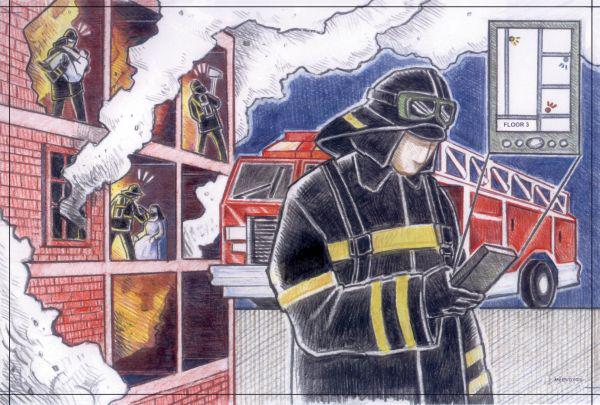FirstNet On Track In Daunting Task to Erect First-Ever Nationwide EMS Network
Now that the First Responder Network Authority officially launched its state-by-state consultation endeavor toward building the first-ever nationwide EMS network, leaders face a “key point in the development of the venture. FirstNet, the independent authority tasked by Congress with creating a wireless broadband network for public safety, wants to give 3 to 5 million first responders not only priority on the spectrum, but equip them with smartphones to empower them to better do their jobs.
Now that the First Responder Network Authority officially launched its state-by-state consultation endeavor toward building the first-ever nationwide EMS network, leaders face a “pivotal point” in the development of such a dynamic venture, Deputy General Manager T.J. Kennedy says. FirstNet, the independent authority tasked by Congress with creating a wireless broadband network for public safety, wants to give 3 to 5 million first responders not only priority on the spectrum, but equip them with smartphones to empower them to better do their jobs.
The agency, with a $7 billion budget, just finalized a year-long process of establishing mechanisms to reach out to all the states, territories and the District of Columbia and systematically collect critical information and input. The “lengthy process” of consultations begins in July as FirstNet works toward its mission “to establish a nationwide, interoperable broadband network for America’s first responders and other public safety workers,” Kennedy said Thursday at an AFCEA Law Enforcement event in Bethesda, Maryland. “It’s a mission that is so very important and, frankly, overdue. And it’s something everyone in the public safety community agrees—we need now.”
FirstNet envisions a plan guaranteeing first responders a dedicated span of spectrum to avoid perils as seen in the aftermath of Hurricane Sandy in 2012, in which the first thing to go down was the cellphone network. “Often it’s not because the back-end infrastructure that has failed,” says Steve Noel, the statewide interoperability coordinator with the Oregon Transportation Department. “The failure happens because the systems are overloaded with people in the event center using their cells to call for help or to talk to friends and family. Having dedicated spectrum will be a huge benefit in these and other situations. Over time you can build in the hardening and the higher level standards once you have the system operational.”
First responders would have smartphones and access to basic wireless data services. Proponents envision police using smartphones with apps and a GPS tracking capability so each has real-time, eyes-on fixes of colleagues. Or using phones to access real-time video inside schools for better situational awareness in the event of a crisis—and with the push of a button on an app, can lock down the doors if needed.
“All of these capabilities are integrated back into the command center where [a commander] has the emergency management operational system,” Noel explains. Some of these examples are up and running in some Oregon sheriff’s offices. “If you look at a commander’s phone, apps listed include Triage, Mapping and Logistics. They can control logistics. It’s like an early show of some of the things we imagine with the evolution of FirstNet and they’re doing some of this today.”
Kennedy cites another example: Someone witnesses a crime and alerts 911 by sending a photograph or video, which then is pushed from the dispatch center to first responders, who can better assess a situation before even arriving on scene. “Make no mistake—we face challenges,” Kennedy says. “Providing broadband data coverage in areas that, frankly, comprise most of the country is a big, big task.”
FirstNet aims to bring more advanced technologies to smaller jurisdictions and will gather requirements as it develops its deployment plan. Consultation topics with each of the states and territories include:
- Construction of a core network and any radio access network buildout
- Placement of towers
- Coverage areas of the network, whether at the regional, state, tribal or local levels
- Adequacy of hardening, security, reliability and resiliency requirements
- Assignment of priority to local users
- Assignment of priority and selection of entities seeking access to or use of the nationwide interoperable public safety broadband network and training needs of local users.





Comments